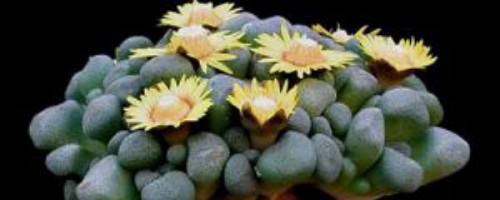Native to South Africa, Tangfan is a perennial succulent herbaceous plant belonging to Rhomborescens family. It likes cool, dry and sunny environment, is afraid of heat, is not tolerant of waterlogging and drought, and has the habit of growing in cold season and dormancy at high temperature in summer. This plant is native to southern Africa and belongs to the apricot family. Tang fan prefers a cool, dry and sunny environment, is afraid of heat, is not tolerant of waterlogging, and is more tolerant of drought. It has the habit of growing in cold season and dormancy at high temperature in summer. Its fleshy leaves are small, approximately spoon shaped, blue-green or brown-green leaves, dense dark tongue moss small warts, flowers 1~2 cm in diameter, yellow and red color, silk-like luster, with high ornamental value.

How to plant Tang fan seeds
Planting time: The best planting season for Tangfan is in autumn. This is because the temperature and humidity conditions in autumn are suitable for germination and growth.
Sowing soil: Choose loose, well-drained and nutrient-rich soil for sowing. It can be prepared using a mixture of peat soil and sand to provide a good growing environment.
Sowing method: Spread the Tang fan seeds evenly on the surface of the soil, because the seeds are small, it is not appropriate to cover the soil too thick after sowing, so as not to affect the germination. Then use the method of swelling irrigation watering, that is, let the water from the bottom of the basin drainage hole slowly wet the soil, so that the soil to keep moist.
Germination time: Under suitable conditions, Tang fan seeds will emerge in about a week.
Seedling management: After emergence, keep the soil moist, but avoid over-watering to avoid water accumulation. At the same time, appropriate light is given to promote the growth of seedlings.
It is native to South Africa. Prefers warm, dry and sunny environments. Fear of high temperature, wet, not cold, drought resistance.
Favorite temperature: 10-20℃
Watering: Water moderately during the growing period
Light: Full sun
Propagation: sowing, leaf insertion
Pests and diseases: scale insects
Combination suggestions: Antler begonia, Silver Star
< img SRC = "https://pinduoduo.news/pic/20240424/5194.jpg" title = "tang fan" Alt = "tang fan" style = "text - wrap: wrap;" />
Watering and fertilizing: moderate watering during the growing period, keep dry in winter. Fertilize every 2-3 weeks during the growing season.
Ventilation and light: when the summer is high temperature, the plant is in a dormant or semi-dormant state, the growth is slow or completely stagnant, it should be placed in a well-ventilated place for maintenance, do not fertilize, appropriate shade, avoid exposure to the scorching sun, and control watering to prevent the rot of the plant caused by hot and humid.
Temperature: In winter, when it is placed in a sunny place indoors, the temperature is not less than 10 ° C, and there is a certain temperature difference between day and night, it can be watered normally to make the plant continue to grow.
Sowing: sowing in early spring, germination temperature 21℃.
Leaf insertion: carried out in late spring or early summer, cut the growing leaves, lay them on the sand bed, and take root 10-15 days after insertion.